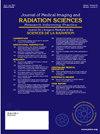精准医疗时代人工智能在颈部超声中的应用
IF 1.3
Q3 RADIOLOGY, NUCLEAR MEDICINE & MEDICAL IMAGING
Journal of Medical Imaging and Radiation Sciences
Pub Date : 2024-10-01
DOI:10.1016/j.jmir.2024.101458
引用次数: 0
摘要
人工智能(AI)在医疗保健领域的重要性日益凸显。在过去几年中,医疗人工智能领域的科学研究迅速增长,从2012年的1623项研究增加到2021年的29947项研究,其中许多研究与放射学有关。到 2023 年,美国食品和药物管理局已批准 700 种人工智能医疗算法,其中 527 种(75.3%)涉及放射学。在人工智能赋能放射学领域,人工智能在超声成像中的应用正在兴起,包括肝脏、兽、甲状腺、淋巴结等超声。超声通常用于评估头颈部肿块。在甲状腺结节患者中,超声可用于区分良性和恶性结节,并引导细针穿刺。超声也是评估头颈部癌症患者颈部淋巴结的常用成像模式。目前有多种人工智能赋能的计算机辅助诊断工具可用于甲状腺结节的超声检查。基于人工智能的超声图像淋巴结分割和分类算法正在兴起。这些算法可帮助临床医生提高诊断准确性并指导患者管理。本讲座将介绍和讨论不同的人工智能甲状腺和淋巴结超声成像诊断工具。本文章由计算机程序翻译,如有差异,请以英文原文为准。
Application of Artificial Intelligence in Neck Ultrasound in the Era of Precision Medicine
The importance of artificial intelligence (AI) in medical healthcare is increasingly becoming apparent. There is a rapid growth of scientific research in medical AI in the past years, from 1,623 studies in 2012 to 29,947 studies in 2021, and many of these studies are related to radiology. By 2023, the FDA has approved 700 AI healthcare algorithms and 527 (75.3%) are in radiology. In AI-empowered radiology, the application of AI in ultrasound imaging is emerging which includes ultrasound of liver, beast, thyroid gland, lymph node, etc. Ultrasound is commonly used for the evaluation of head and neck masses. In patients with thyroid nodules, ultrasound is used for the differentiation of benign and malignant nodules, and guiding fine-needle aspiration. Ultrasound is also a common imaging modality to assess neck lymph nodes in head and neck cancer patients. Various AI-empowered and computer-assisted diagnostic tools for ultrasound examination of thyroid nodules are available. AI-based algorithms for lymph node segmentation and classification in ultrasound images are emerging. They help clinicians improve diagnostic accuracy and guide patient management. In this talk, different AI-empowered diagnostic tools for thyroid and lymph node ultrasound imaging will be introduced and discussed.
求助全文
通过发布文献求助,成功后即可免费获取论文全文。
去求助
来源期刊

Journal of Medical Imaging and Radiation Sciences
RADIOLOGY, NUCLEAR MEDICINE & MEDICAL IMAGING-
CiteScore
2.30
自引率
11.10%
发文量
231
审稿时长
53 days
期刊介绍:
Journal of Medical Imaging and Radiation Sciences is the official peer-reviewed journal of the Canadian Association of Medical Radiation Technologists. This journal is published four times a year and is circulated to approximately 11,000 medical radiation technologists, libraries and radiology departments throughout Canada, the United States and overseas. The Journal publishes articles on recent research, new technology and techniques, professional practices, technologists viewpoints as well as relevant book reviews.
 求助内容:
求助内容: 应助结果提醒方式:
应助结果提醒方式:


